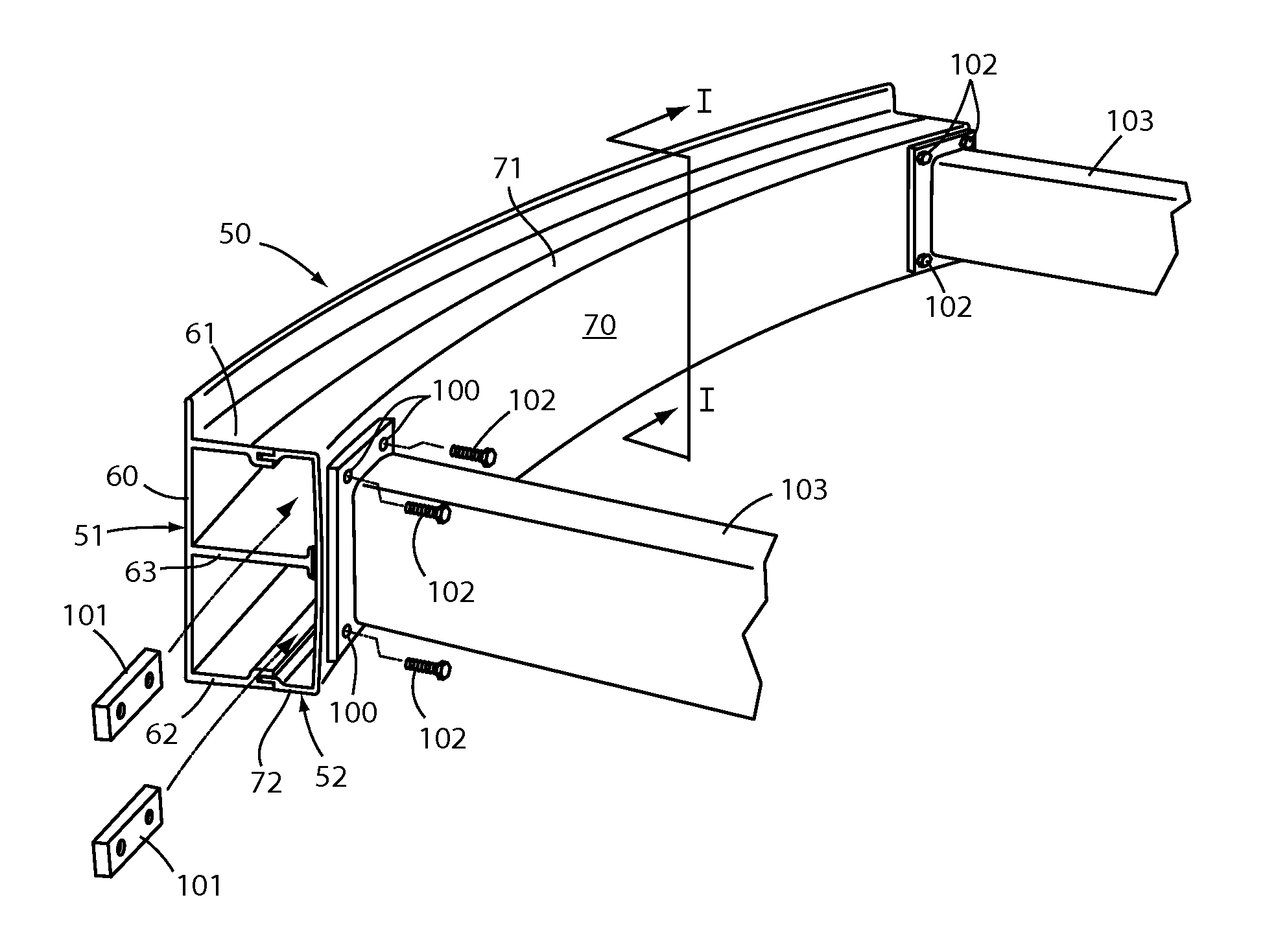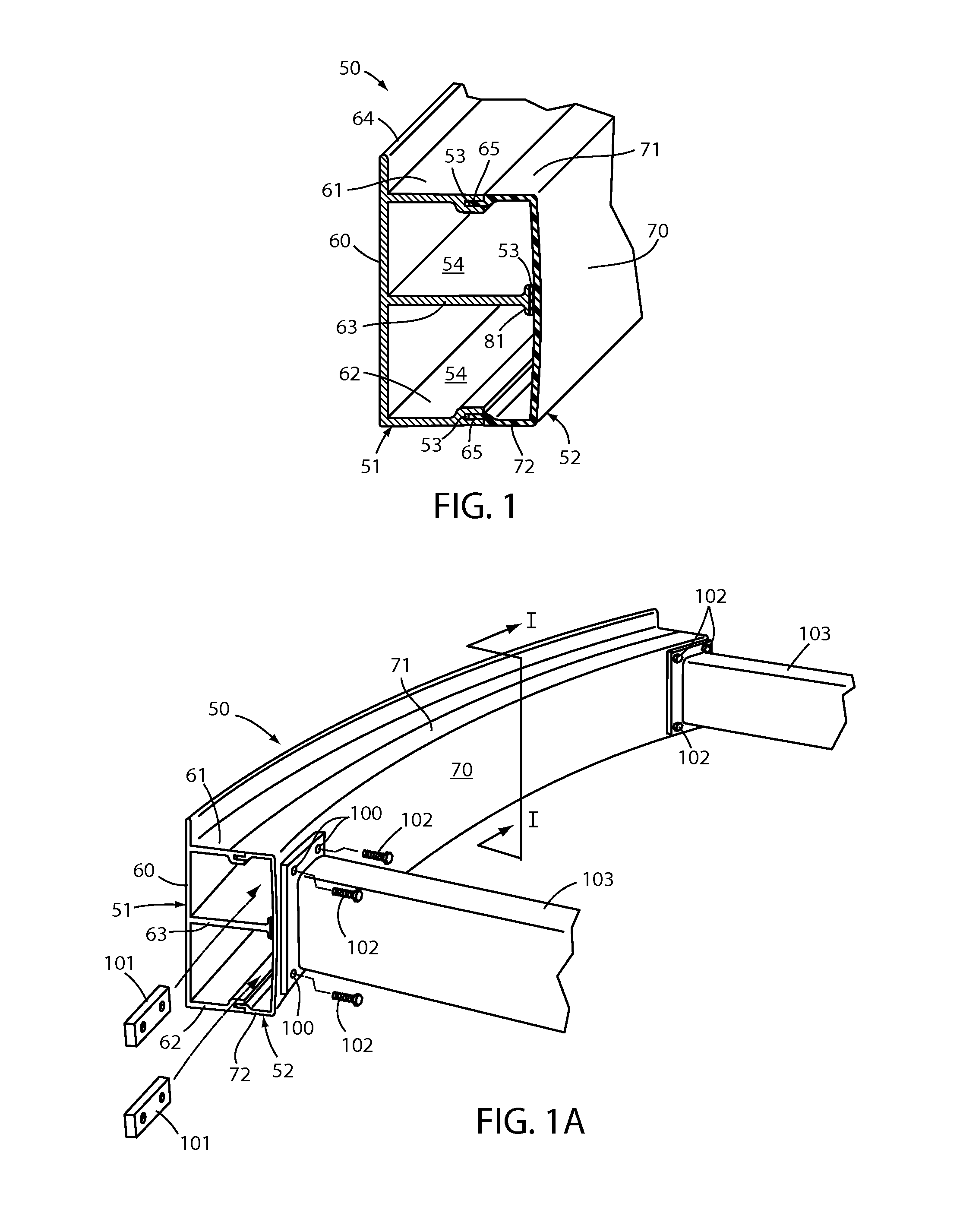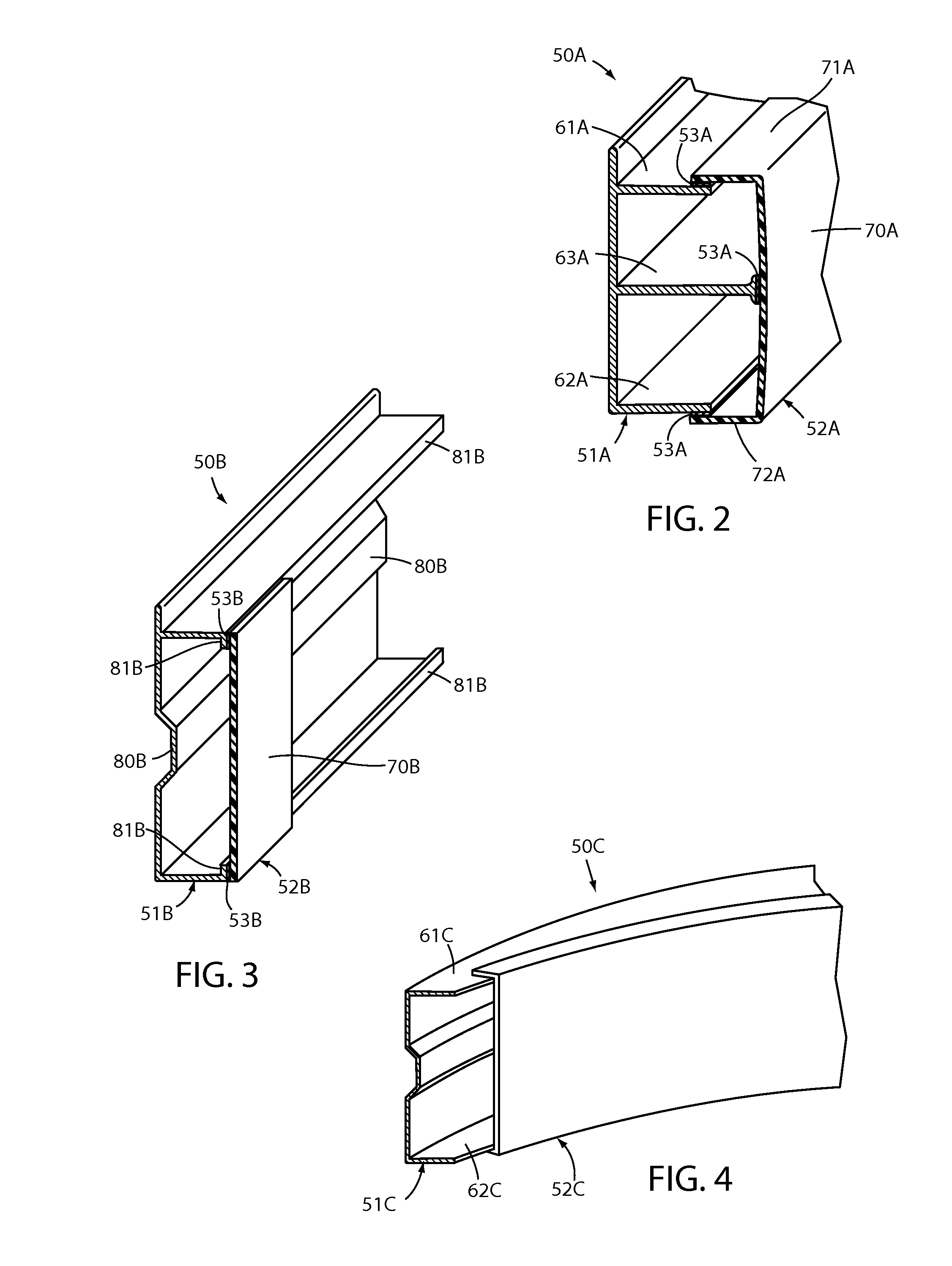Beam incorporating aluminum extrusion and long-fiber reinforced plastic
a technology of extrusion and plastic, applied in bumpers, paper/cardboard containers, vehicular safety arrangments, etc., can solve the problems of not being able to meet all design goals, no single material or process satisfies all design goals, and aluminum material tends to perform acceptablely under compressive stress but not as well under tensile stress, etc. , to achieve the effect of optimal impact bending strength, high energy absorption properties, and increased manufacturing efficiency
- Summary
- Abstract
- Description
- Claims
- Application Information
AI Technical Summary
Benefits of technology
Problems solved by technology
Method used
Image
Examples
Embodiment Construction
[0024]The present innovative system comprises an impact beam, such as can be used as a bumper reinforcement beam in vehicle bumper systems. The illustrated beam 50 of FIG. 1 bonds a multi-channel-shaped fiber reinforced polymeric (FRP) part 52 to an extruded metal section 51 (e.g. aluminum) using structural adhesive 53, to thus form an impact beam suitable for attachment to vehicle frame rails 104 as a bumper reinforcement beam. The illustrated arrangement includes attachment plate brackets 101 placed inside the beam 50, and fasteners 102 extended through holes 103 in a plate at a front end of the illustrated frame rail tips 104 and extended into threaded holes in the brackets 101. However, it is contemplated that various attachment constructions can be used and are within a scope of the present invention.
[0025]The present innovation focuses / facilitates optimizing beams during design while maintaining flexibility of design, with the beam having optimal properties of: high impact str...
PUM
| Property | Measurement | Unit |
|---|---|---|
| length | aaaaa | aaaaa |
| tensile strength | aaaaa | aaaaa |
| tensile strength | aaaaa | aaaaa |
Abstract
Description
Claims
Application Information
 Login to View More
Login to View More - R&D
- Intellectual Property
- Life Sciences
- Materials
- Tech Scout
- Unparalleled Data Quality
- Higher Quality Content
- 60% Fewer Hallucinations
Browse by: Latest US Patents, China's latest patents, Technical Efficacy Thesaurus, Application Domain, Technology Topic, Popular Technical Reports.
© 2025 PatSnap. All rights reserved.Legal|Privacy policy|Modern Slavery Act Transparency Statement|Sitemap|About US| Contact US: help@patsnap.com



